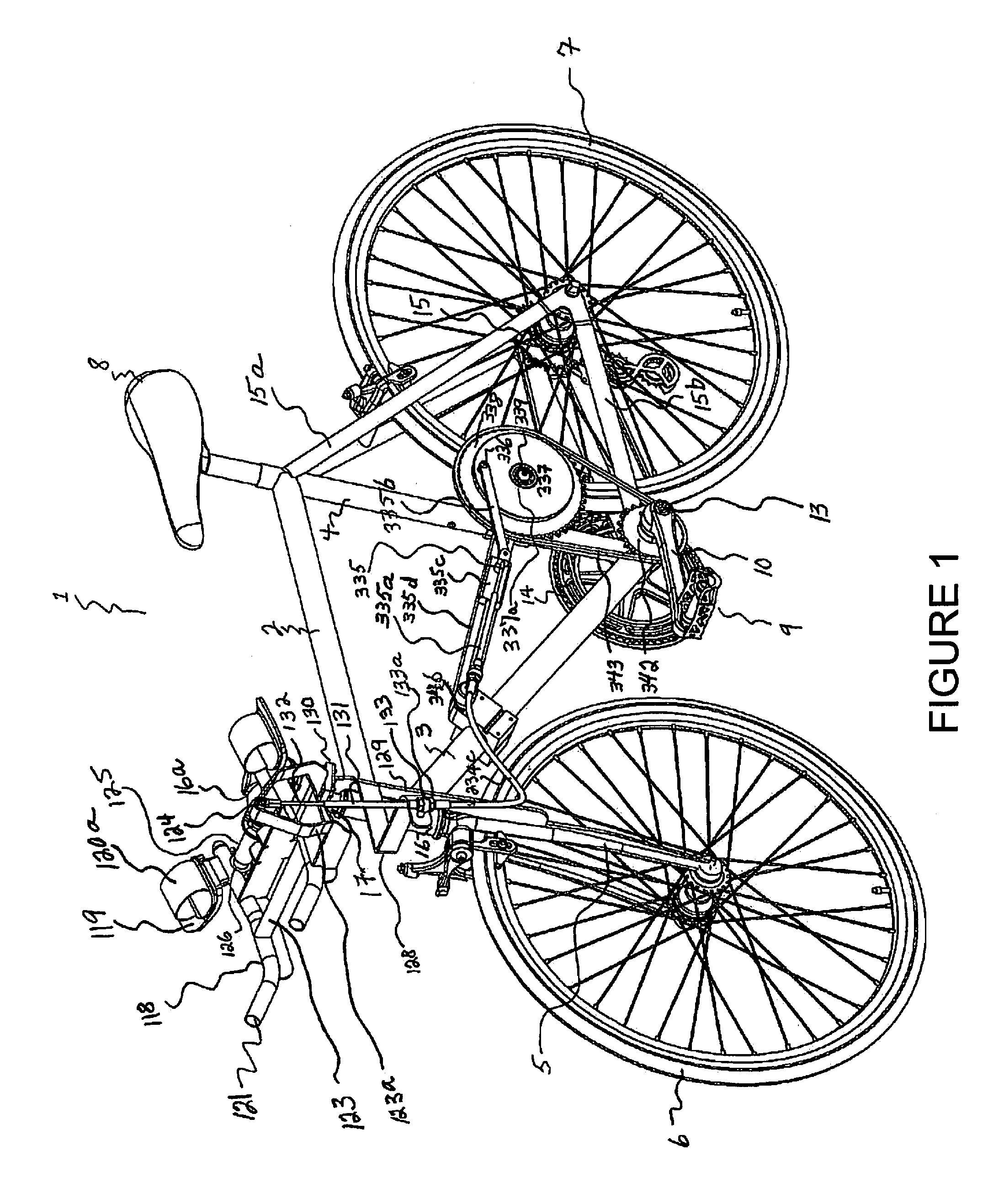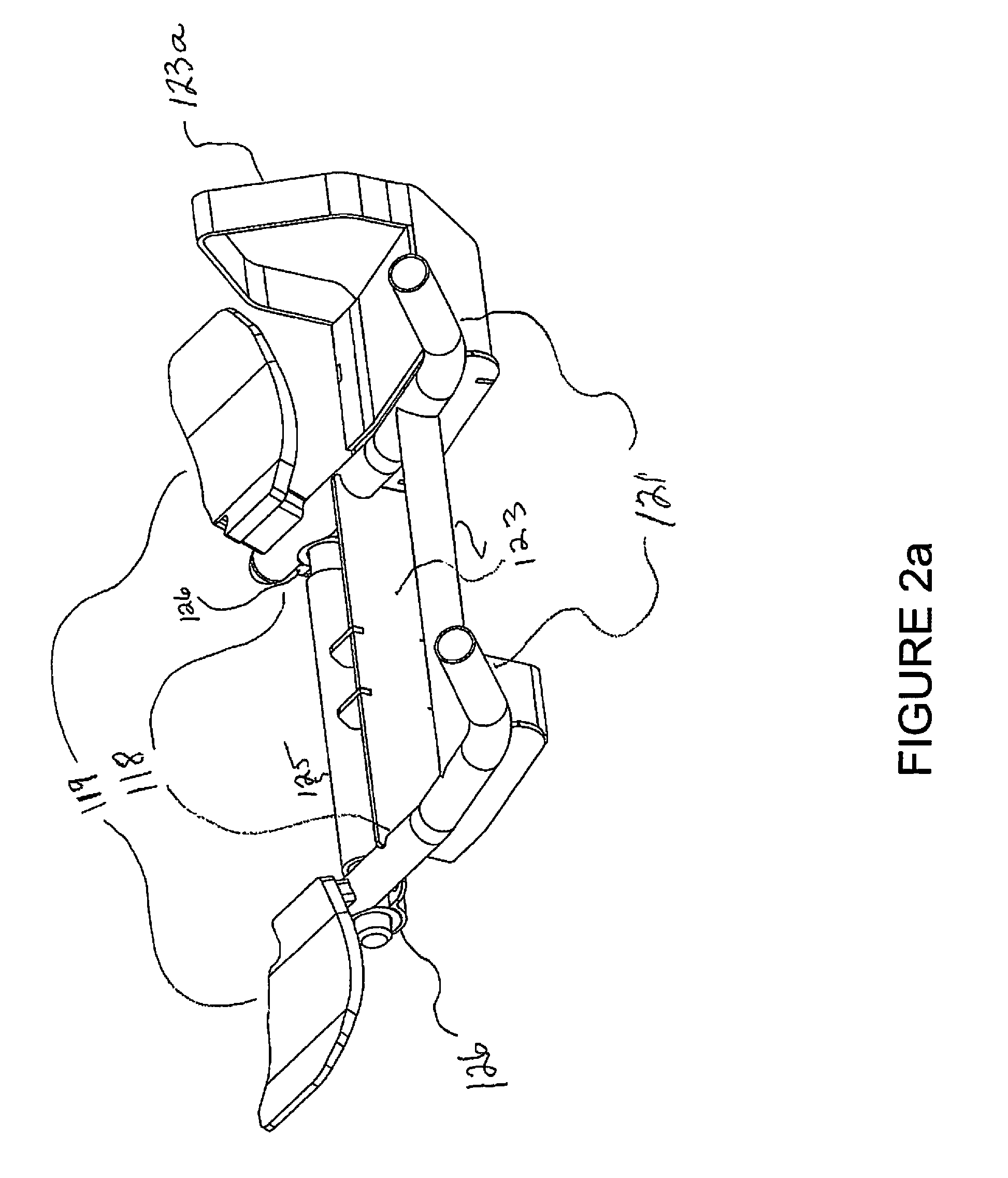Dual powered propulsion system
a propulsion system and dual-power technology, applied in the direction of steering devices, chain/belt transmissions, vehicle components, etc., can solve the problems of unstable control of the rider's bicycle, lack of power provided by the rider, etc., to improve the efficiency of the body's lactate uptake, and the effect of heavy loads
- Summary
- Abstract
- Description
- Claims
- Application Information
AI Technical Summary
Benefits of technology
Problems solved by technology
Method used
Image
Examples
Embodiment Construction
[0129]In the following description and accompanying drawings, like numbers refer to like parts whenever they occur.
[0130]The Dual Power Bicycle consists of Bicycle Frame 1, and has attached to its Turning Tube 17 a perpendicularly mounted Fulcrum Rod 125. This Fulcrum Rod 125 serves two purposes, a) provides the rider with the ability to steer the front wheel 6 of the bicycle with his forearms and hands by causing the Turning Tube 17 to naturally steer right or left when he turns it with the Forearm / hand Bars 118, which are attached to the Fulcrum Rod 125, and b) permits the rider to simultaneously input 100% of his power into the Crank Axle 13 from rotationally pumping “up and down” the Forearm / hand Bars 118. The Fulcrum Rod 125 has on each end of it a Bearing 126, and attached to each of these Bearings 126 is the rear end of one of two Forearm / hand Bars 118. Thus, as the rider “pulls-up and pushes-down” the Forearm / hand Bars 118, the rear end of each of these Forearm / hand Bars 118...
PUM
 Login to View More
Login to View More Abstract
Description
Claims
Application Information
 Login to View More
Login to View More - R&D
- Intellectual Property
- Life Sciences
- Materials
- Tech Scout
- Unparalleled Data Quality
- Higher Quality Content
- 60% Fewer Hallucinations
Browse by: Latest US Patents, China's latest patents, Technical Efficacy Thesaurus, Application Domain, Technology Topic, Popular Technical Reports.
© 2025 PatSnap. All rights reserved.Legal|Privacy policy|Modern Slavery Act Transparency Statement|Sitemap|About US| Contact US: help@patsnap.com



